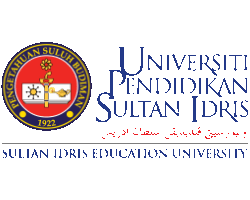ASEAN at the Crossroads of US-China Rivalry: The Role of Majority Voting and the Introduction of a Permanent Secretary-General
Abstract
This paper examines ASEAN's need for structural reform amidst the US-China rivalry, highlighting the limitations of its consensus approach during crises. It proposes majority voting as an emergency measure and advocates for a Permanent Secretary-General position, ensuring consistent leadership. The analysis balances the benefits and challenges of these reforms, emphasizing the necessity for ASEAN to evolve while maintaining its core values, ensuring relevance and unity in addressing major geopolitical challenges.
Downloads
References
H. T. Ha, “Understanding the institutional challenge of indo-pacific minilaterals to ASEAN,” Contemporary Southeast Asia, vol. 44, no. 1, pp. 1–30, 2022.
M. Yahuda, “China’s new assertiveness in the South China Sea,” Journal of Contemporary China, vol. 22, no. 81, pp. 446–459, 2013.
J. P. Rowan, “The U.S.-Japan Security Alliance, ASEAN, and the South China Sea dispute,” Asian Survey, vol. 45, no. 3, pp. 414–436, 2005.
S. Zhao, “The US–China rivalry in the emerging bipolar world: Hostility, alignment, and power balance,” Journal of Contemporary China, vol. 31, no. 134, pp. 169–185, 2021.
D. M. Jones, and M. L. R Smith, “Making process, not progress: ASEAN and the Evolving East Asian Regional Order,” International Security, vol. 32, no. 1, pp. 148–184, 2007.
K. Ishikawa, “The ASEAN Economic Community and Asean Economic Integration,” Journal of Contemporary East Asia Studies, vol. 10, no. 1, pp. 24–41, 2021.
D. M. Loh, “The disturbance and endurance of norms in ASEAN: Peaceful but stressful,” Australian Journal of International Affairs, vol. 72, no. 5, pp. 385–402, 2018.
A. Acharya, Constructing a Security Community in Southeast Asia, Routledge: London, 2014.
A. D. Ba, (re)negotiating east and Southeast Asia region, regionalism, and the Association of Southeast Asian Nations, Stanford University Press: London, 2019.
G. Qian, L. Li, J. Li, and Z. Qian, “Regional diversification and firm performance,” Journal of International Business Studies, vol. 39, no. 2, pp. 197–214, 2008.
S. Fink, “‘when I find myself in times of trouble …’ : The conditional effect of international organisations on Policy Convergence,” European Journal of Political Research, vol. 52, no. 5, pp. 630–659, 2012.
T. Lenz, and A. Burilkov, “Institutional Pioneers in World Politics: Regional Institution Building and the influence of the European Union,” European Journal of International Relations, vol. 23, no. 3, pp. 654–680, 2016.
T. A. Börzel, Governance transfer by regional organizations: Patching together a global script. Palgrave: Macmillan, 2015.
T. Lim, and S. E. Kim, “Buying influence? rotating leadership in ASEAN and allocation of Chinese foreign aid,” International Relations of the Asia-Pacific, vol. 23, no. 2, pp. 351–377, 2022.
E. Goh, “Institutions and the Great Power Bargain in East Asia: ASEAN’s limited “brokerage” role,” International Relations of the Asia-Pacific, vol. 11, no. 3, pp. 373–401, 2011.
C. Ehlermann, and L. Ehring, “Decision-making in the World Trade Organization,” Journal of International Economic Law, vol. 8, no.1, pp. 51–75, 2005.
T. Yukawa, “The ASEAN way as a symbol: An analysis of discourses on the ASEAN norms,” The Pacific Review, vol. 31, no. 3, pp. 298–314, 2017.
A. Acharya, Whose ideas matter: Agency and power in Asian regionalism. Cornell University Press: New York, 2011.
M. Beeson, “Living with giants: ASEAN and the evolution of Asian regionalism,” TRaNS: Trans-Regional and National Studies of Southeast Asia, vol. 1, no. 2, pp. 303–322, 2013.
A. Jetschke, and P. Murray, “Diffusing regional integration: The EU and Southeast Asia,” West European Politics, vol. 35, no. 1, pp. 174-191, 2012.
L. M. Goodrich, “The secretariat of the United Nations,” Un Administration of Economic and Social Programs, pp. 1–36, 1966.
N. Morada, “The ASEAN charter and the Promotion of R2P in Southeast Asia: Challenges and constraints.” Global Responsibility to Protect, vol. 1, no. 2, pp. 185–207. 2007.
J. Haacke, “The concept of flexible engagement and the practice of Enhanced Interaction: Intramural challenges to the ‘Asean Way.’” The Pacific Review, vol. 12, no. 4, pp. 581–611, 1999.
V. Pouliot, “Diplomats as Permanent Representatives,” International Journal: Canada’s Journal of Global Policy Analysis, vol. 66, no. 3, pp. 543–561, 2011.
K. Scott, “Institutional Developments within the Antarctic Treaty System,” International and Comparative Law Quarterly, vol. 52, no. 2, pp. 473–487, 2003.
E. Brewer, “The participation of the European Union in the work of the United Nations: Evolving to reflect the new realities of regional organizations,” International Organizations Law Review, vol. 9, no. 1, pp. 181–225, 2012.
T. Yuzawa, “The evolution of preventive diplomacy in the ASEAN Regional Forum: Problems and Prospects,” Asian Survey, vol. 46, no. 5, pp. 785–804, 2006.
A. H. Schakel, and R. Dandoy, “Electoral cycles and turnout in Multilevel Electoral Systems,” West European Politics, vol. 37, no. 3, pp. 605–623, 2014.
E. Fabre, “Multi-level election timing—a comparative overview,” Regional & Federal Studies, vol. 20, no. 2, pp. 175–199, 2010.
C. Jeffery, and D. Hough, “Regional elections in Multi-Level Systems,” European Urban and Regional Studies, vol. 10, no. 3, pp. 199–212, 2003.
N. M. Morada, “ASEAN at 40: Prospects for Community Building in Southeast Asia,” Asia-Pacific Review, vol. 15, no. 1, pp. 36–55, 2008.
M. Oba, “ASEAN and the creation of a regional community,” Asia-Pacific Review, vol. 21, no.1, pp. 63–78. 2014.
R. Wong, “Model power or reference point? the EU and the ASEAN charter,” Cambridge Review of International Affairs, vol. 25, no. 4, pp. 669–682, 2012.
W. E. Scheuerman, “Emergency powers,” Annual Review of Law and Social Science, vol. 2, no. 1, pp. 257–277, 2006.
M. O’Flaherty, and C. O’Brien, “Reform of UN human rights treaty monitoring bodies: A critique of the concept paper on the high commissioner’s proposal for a Unified Standing Treaty Body,” Human Rights Law Review, vol. 7, no. 1, pp. 141–172, 2007.
S. Duke, “Diplomatic training and the challenges facing the EEAS,” The Hague Journal of Diplomacy, vol. 7, no. 1, pp. 95–114, 2012.
K. Papagianni, “Mediation, political engagement, and peacebuilding,” Global Governance: A Review of Multilateralism and International Organizations, vol. 16, no. 2, pp. 243–263, 2010.
D. B. Drake, N. A. Steckler, and M. J. Koch, “Information sharing in and across government agencies,” Social Science Computer Review, vol. 22, no. 1, pp. 67–84. 2004.
J. He, “Normative power in the EU and ASEAN: Why they diverge,” International Studies Review, vol. 18, no. 1, pp. 92–105. 2016.
Q. M. Pham, “ASEAN’s indispensable role in regional construction,” Asia-Pacific Review, vol. 22, no. 2, pp. 82–101, 2015.





















